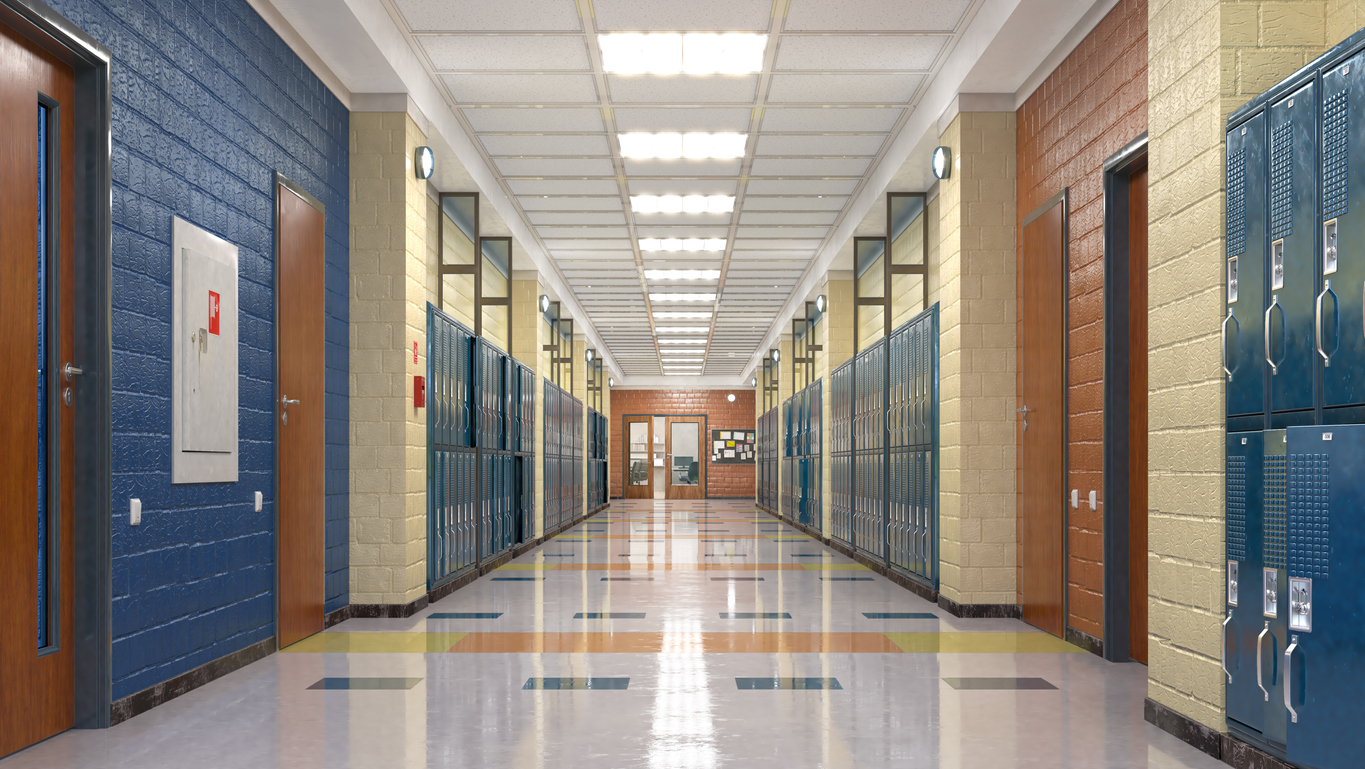
Why training teachers to actively resist won’t work.
“Houston, we have a problem.” That single line, paraphrased and popularized in the 1995 blockbuster Apollo 13, revealed much more than the harrowing events of a near-fatal NASA mission. It hinted at the power of effective learning.
Without a realistic simulated environment on the ground, drilling astronauts on worst-case scenarios, the entire crew would have been lost. It is powerful proof that good training drives real results.
Talk of arming teachers, to save the lives of their students and themselves, has us thinking about the Apollo 13’s training triumph.
Could teachers be effectively trained to defend against an active shooter?
Emerson develops learning programs our clients use to teach people to follow new processes or systems, up their performance, or deliver excellence for customers. What does that have to do with training astronauts or teachers to save lives? It all comes down to creating new behaviors. We know how to do that.
Let’s examine the training principles we recommend to effect new behaviors, and how those principles would work if we trained teachers to resist a violent intruder.
Match competencies to the role.
This is something our clients do outside of training. Every role has a competency profile – the skills and capabilities a person needs to be right for the job.
This is a common-sense but critical element of great performance. Yes, training helps people perform, but there are certain gaps that are hard to bridge with training. That’s why recruiters and managers take such pains to pair people and positions.
Needless to say, we hire teachers for their excellence in instructing our kids. They need teaching certificates, along with intelligence, communication skills, perception, compassion… If we were hiring people to neutralize violent intruders, the list would be different. So, before we even approach training, we have a potential performance problem.
Make it realistic.
The closer training is to reality, the better. Why? In order for people to perform, they need to transfer what they learned in training to on-the-job performance. The further the learning environment is from the performance environment, the less likely it is that the learner will transfer those new behaviors to real life.
Part of it is the setting. “State-dependent learning” says people perform better in the physical environment in which they learned to perform. That includes all the sights, sounds, smells, tools, and people. So, ideally, the learner would receive training in his or her performance environment—the real workspace.
Part of it is the scenario. We try to present learners with exactly the inputs and stimuli they will face on the job, and give them exactly the resources they will have at hand to solve the problem.
Could we apply that to teacher response training? They could certainly train in their own school buildings. That would be critical, as—aside from state-dependent learning—each building is physically different; those differences would require a custom response. But what about the scenario? That’s more of a problem.
It’s hard to anticipate exactly what would happen when someone is literally trying to take people by surprise.
Which brings us to our next principle…
Train on the exceptional.
We build training to include both the default and likely exceptions. Let’s say we’re designing training for department store employees. We might include scenarios on accepting purchase returns. In the common situation, it’s relatively simple: (1) Scan receipt. (2) Enter return reason code when prompted. (3) Press the Return button. Great. But then we ask, “What if…?” What if the customer doesn’t have a receipt? What if it’s past the time window to accept the return? What if this makes the customer mad? What if there’s a technical issue like an error message or a system outage? We must train employees on each of these scenarios.
But what if the default situation is already chaotic? If an active shooter going from classroom to classroom trying doors is your baseline, what other scenarios would we train? Imagine teachers learning to respond to one grave possibility after another.
Create unconscious habit.
We tell our clients that knowing what to do is not enough, especially in high-pressure situations. New behaviors must convert to habits, through repetitive practice cycles made up of a trigger, the right action, and some kind of reinforcement. Consider this comment on the police response to the Uvalde school shooting:
In the past two years, the Uvalde school district has hosted at least two active shooter trainings, according to reporting by The Times. One of them was two months ago. …Law enforcement officers need to be mentally prepared before they arrive on the scene, so they can respond immediately.
Repetitive training builds practice and confidence. Big gatherings for training every few years are more expensive and less effective for muscle memory. Instead, departments should consider more virtual tabletop exercises they can run through in an afternoon. Have officers walk through schools and talk with one another about how they would respond. Require officers to check all their gear before they begin a shift.
Learning experts know that, even if you drill during training, you can’t let new behaviors go stale and expect performance. We recommend our clients train only what is needed or will be used immediately on the job, providing natural repetition. Then we extend the learning experience through check-ins, on-the-job challenges, or learning networks, giving learners as many opportunities as possible to apply new skills after training.
So how would that work, if we were training teachers to forcibly resist?
They can’t actually use those new skills on the job until the unthinkable happens. Are we prepared to invest the time, effort, and emotional energy to effectively drill teachers, over and over, on their worst nightmare? Because that’s what it would take to create the right behaviors to make any difference.
Effective learning experiences are realistic and repetitive, preparing well-chosen people to create the new habits they need to perform. We have trouble imagining that training teachers to use guns will meet those criteria.




